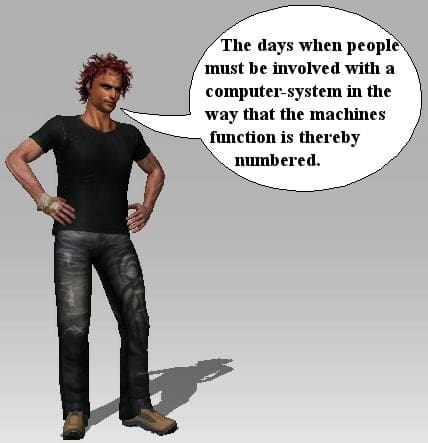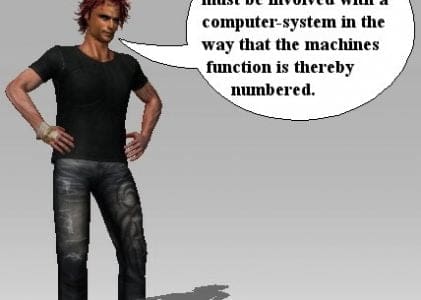Watson 2.0
We are now entering a new technological era. The IBM Watson-computer that e.g. won Jeopardy against human grand masters in the competition has been outdated. Since the company is now developing Watson 2.0 that for instance will have the ability to keep on a dialogue with a human according to IBM representatives. The primary skill of a computer is to process enormous amounts of information and in combination with a dialogue function this is expected to get significant impact on many areas of the society like medicine, finance and other business.
The CEO of IBM Ginni Rometty says: ”Today we stand poised on the brink of a new era of computing in which technology is more consumable, insight-driven and cognitive.” The days when people must be involved with computer-system in the way that the machines function is thereby numbered. The aim of this shift of paradigm is to develop computers that adapt in order to interact with people in the way people work.
From Web 2.0 to Web 3.0
In my book Lärande för alla sinnen (Learning for all senses) I describe the webs development in four steps:
Web 1.0 pioneer years between 1990-2000
Web 2.0 the social web between 2000-2010
Web 3.0 the semantic web between 2010-2020
Web 4.0 the intelligent web between 2020-2030.
Timothy Berners-Lee wrote “I have a dream for the web where computers are capable of analysing all data on the web – content, links, transactions between people and computers.” This is a form of intelligent agents that complement the human working memory. After the pioneer-years and later the Facebook- and Twitter-era that we now harvest the fruits from, we are now taking the next step, the semantic web, read more about the semantic web here. The target of the IBM-project mentioned above then leads on to Web 4.0. It is in this light the new gigantic EU-financed project The Human Brain Project should be seen.
The Human Brain Project: technology and humanity
The Human Brain Project is an interdisciplinary project with focus on neuroscience, medicine and computer science. The primary goal is: ”The Human Brain Project should lay the technical foundations for a new model of ICT-based brain research, driving integration between data and knowledge from different disciplines, and catalysing a community effort to achieve a new understanding of the brain, new treatments for brain diseases and new brain-like computing technologies.”
The project is aiming to that within different fields of science develop computer technology as tool for science and develop new software and hardware with innovative interactive abilities. In other words intelligent tools to manage and mining large amounts of data as well as develop computer-based human-like intelligence. Within medicine the focus rests on finding better methods to diagnose and cure brain-related diseases. In addition also develop methods to produce medicine that is adapted to individual human prerequisites.
In order to accomplish this, studies of the brain in a multi-level perspective is required, from the genes to cognitive abilities with a special focus on the unique with the human brain like language, emotions and consciousness. In the next step this could lead to new theories about the human brain’s functions and the way it work. The next part in this series of articles I dig deeper into current neuroscience and also the critics that has been put forward against this field of science.
Written by LarsGöran Boström©
Sources
The HBP Report http://www.humanbrainproject.eu/
Cognitive systems: A new era of computing http://www.research.ibm.com/new-era-of-computing.shtml
Lärande för alla sinnen: handbok om eLearning – Pedagogik och integration by LarsGoran Bostrom
Opens in a new tab




